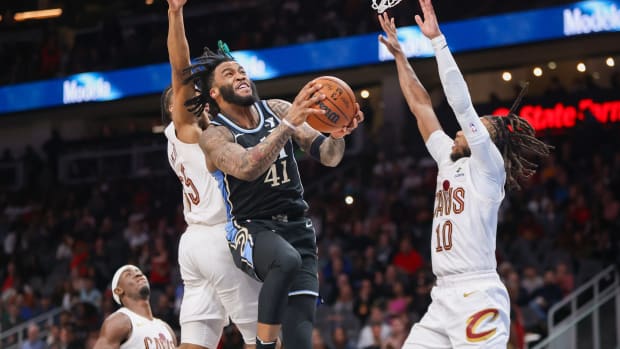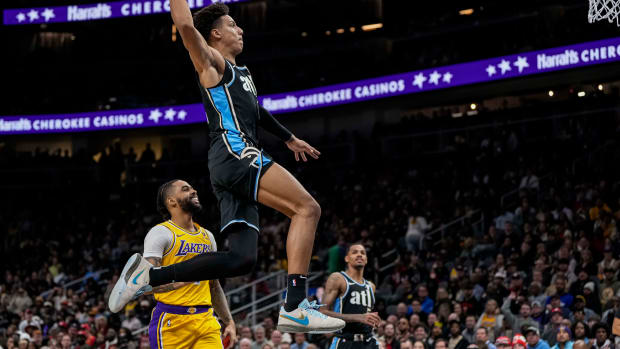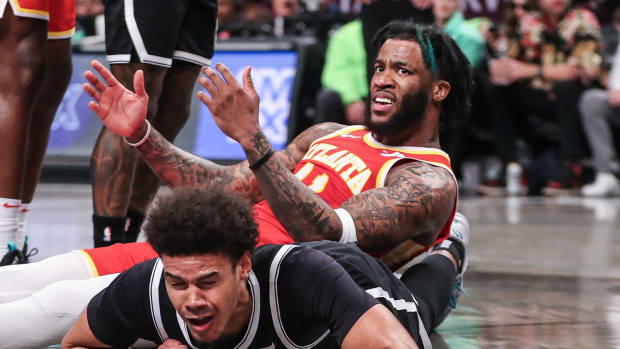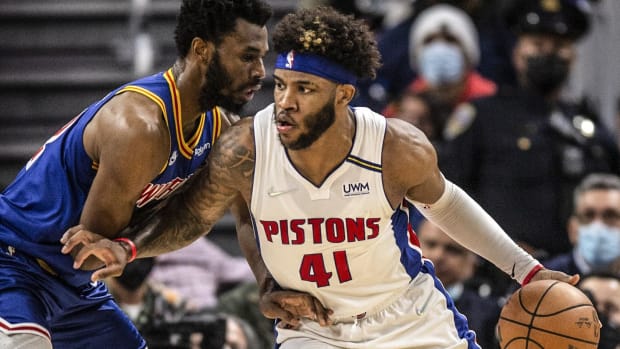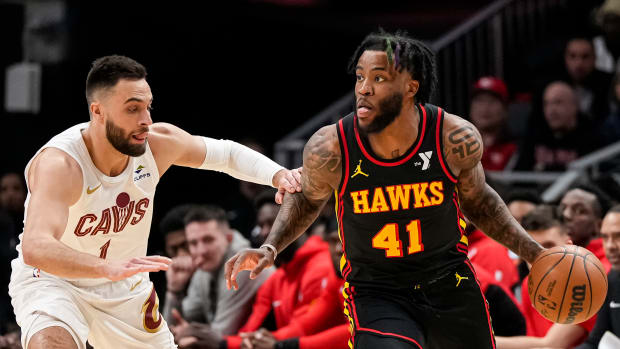Hawks Player Preview: Damian Jones

Damian Jones, a two-time NBA champion and former starting center for the Golden State Warriors, might have more to prove this season than he ever has. For most of his career the 24-year-old has been given the benefit of the doubt, and at 7 feet, 245 pounds with a 7-foot-4 wingspan and elite athleticism, it’s not hard to see why. Jones looks as though he was crafted in a basketball laboratory to dunk, protect the rim, and switch across multiple positions – all intensely valuable skills for a center in the modern NBA. He looked the part enough for the Hawks to trade for him this summer. The trouble for the fourth-year pro is that his value is almost entirely physical – and therefore mostly theoretical.
Jones played just 410 minutes in 24 regular-season games last year, but even that small sample size felt curiously empty. At his best, Jones is the sort of player who can pressure opposing defenses by crushing alley-oops and clearing space with screens. But despite his athleticism and length, he places nearly as much strain on his own team’s back line by playing a reactive brand of defense that often leaves him a step slow. He’d be a valuable rim protector, if only his positioning and anticipation were better. Last season, his first as a rotation player, Jones posted a robust block rate of three percent but also had one of the highest foul rates in the league. The Warriors were nearly four points worse per 100 possessions on defense with him on the floor despite Jones playing most of his minutes with starters. His vertical spacing and shooting at the rim, while individually impressive, never quite had a corresponding positive effect on his team’s offense.
These shortcomings are what brought Jones to Atlanta, where he enters the final year of his rookie deal (the Warriors exercised the final two option years of his contract). Put bluntly, another poor season risks edging Jones out of the league. He’ll have every opportunity to recoup value in a center rotation that lacks a standout option, but may also be in danger of falling out of the rotation if Alex Len evens out or Bruno Fernando pops. Both are probably superior players at the moment and offer a shooting touch Jones simply doesn’t have. Len should be the clear favorite to start and how much Lloyd Pierce decides to play small will directly inform how much room he has for Jones.
All hope is not lost. Teaming up with a spread pick-and-roll threat like Trae Young in a system built around that action prominently could amplify Jones in a way Steve Kerr’s whirring motion offense didn’t. His role on offense will involve little more than setting hard screens (on and off the ball) and rolling full-force to the basket. He poses a more dangerous threat diving to the basket than either Len or Fernando do, which could open up driving lanes for Young or kickout jumpers for shooters. He has even been toying with a corner three-pointer – a shot that would boost his value on offense should it become a legitimate part of his arsenal.
The concept of Jones has yet to come to fruition in his (very) young tenure in Atlanta. In just over 19 minutes per game he has converted only three of his seven shot attempts and has yet to really find his footing. While Atlanta’s style may suit him in theory, he’ll discover what a luxury it was to once share the floor with Steph Curry, Kevin Durant, Klay Thompson, and Draymond Green. The most significant downside of leaving Golden State for a player like Jones is the disappearance of easy opportunities that stem from the other Warriors’ magnetism. Defensively, his impact has waxed and waned. Inconsistent activity simply isn’t something Jones can afford, and his margin for error grows smaller with each passing season.

